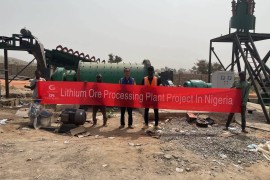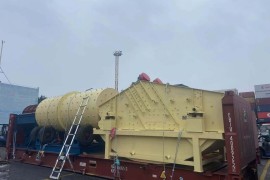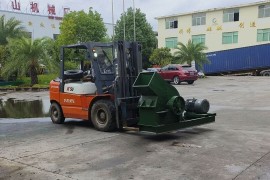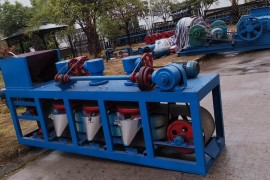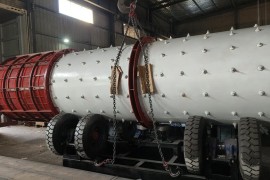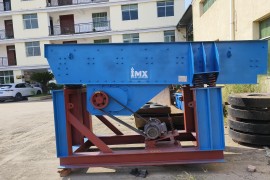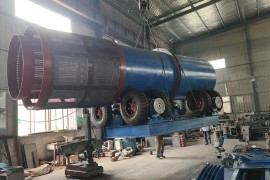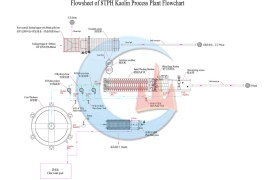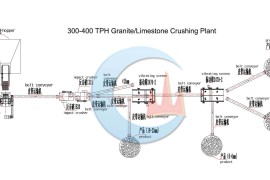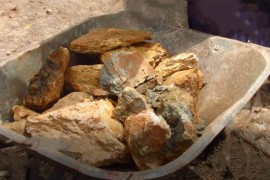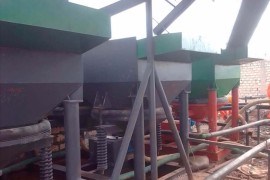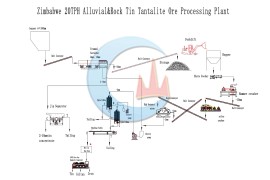Belt Feeder
【Capacity】 10-450 t/h
【Power】 1.5-2.5 kW/Meter
【Belt Width】500-1000 mm
【Applicable Materials】 Suited for applications in gold, copper, coal, zinc, alumina, bauxite, iron ore, limestone, lignite, rock, phosphate rock, salt, sand, and more.
 Chat Online on WhatsApp
Chat Online on WhatsAppAdvantages
The belt feeder is a device for continuous transportation, weighing, and feeding control of bulk materials. It can cooperate with the requirements of the technological processes in the production process of various industrial enterprises to form an intelligent and automated production system. Belt feeders are typically placed under storage facilities such as silos, surge hoppers, load hoppers, etc., and can be operated horizontally or on an incline to save headroom. Belt width is governed by the material size and required tons per hour, and rates can be controlled by adjustable gates or varying belt speeds.
The design and structure of the belt feeder give it many advantages, such as strong conveying capacity, high efficiency, good stability, and low cost. When handling large-volume materials, belt feeders can transport materials evenly and continuously over short distances to various crushing, screening, and transportation equipment. And because of its lower cost, it is more economical than a plate feeder.
The belt feeder has a good sealing performance. It can effectively prevent materials from leaking or spilling during transportation. At the same time, the design and arrangement of the roller set also have their characteristics, which can increase the effective volume of materials and improve the conveying efficiency.
The belt feeder structure considered the actual application conditions at the production site. The overall availability and durability of the equipment are very high, and the parts are versatile, the technology is mature, and the performance is reliable, which improves the overall availability and durability of the equipment.
Belt feeders play an important role in many industrial production processes. In addition to its application in the chemical industry, building materials, cement, food, and other industries, it can also be used in transportation, measurement, and control of feeding links in coal, mining, electric power, and other fields. It is an efficient, stable, economical, and practical equipment for conveying, measuring, and controlling feeding, and has been widely used in many industrial production fields.
Product Structure
The belt feeder is mainly composed of a body, a speed sensor, a load cell, and a control cabinet. The body is composed of a series of mechanical structures, including head and tail rollers, belts, driving components, tensioning devices, cleaning devices, roller/load support devices, etc.
The belt feeder consists of a hopper positioned directly over a belt conveyor. The belt conveyor “pulls” material out from under the hopper. At the same time, an adjustable vertical strike-off plate controls the height of material allowed to advance as the belt moves forward, or in other words, the material profile on the belt. Skirt boards contain material on the belt.
Technical Parameters
| Model | Belt Width (mm) | Feeding Capacity (t/h) | Power Per Meter (kW) |
| 500×3000 | 500 | 10-100 | 1.5 kW/Meter |
| 500×4000 | 500 | 10-100 | 1.5 kW/Meter |
| 650×4000 | 650 | 10-100 | 2 kW/Meter |
| 800×4000 | 800 | 15-150 | 2.5 kW/Meter |
| 800×4500 | 800 | 15-150 | 2.5 kW/Meter |
| 1000×6000 | 1000 | 200-450 | 2.5 kW/Meter |
Successful Cases
Contact Us Now
If you have some questions about our products, please feel free to fill out the form below, and we will contact you within 24 hours. Rest assured that we won’t reveal your information to anyone.




















